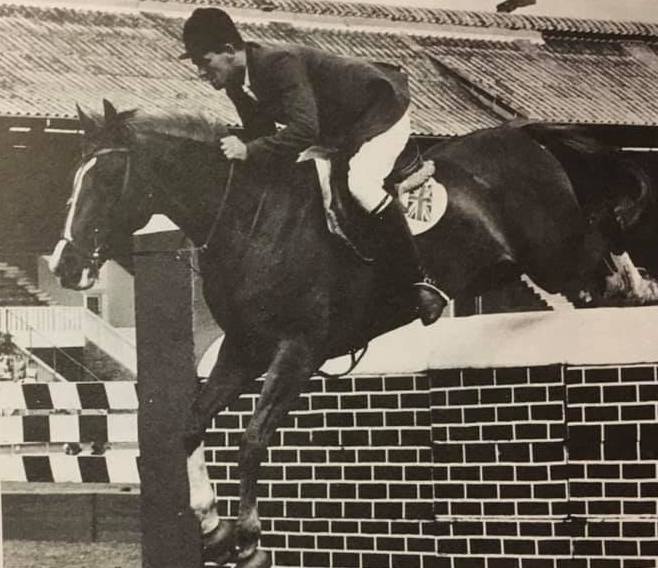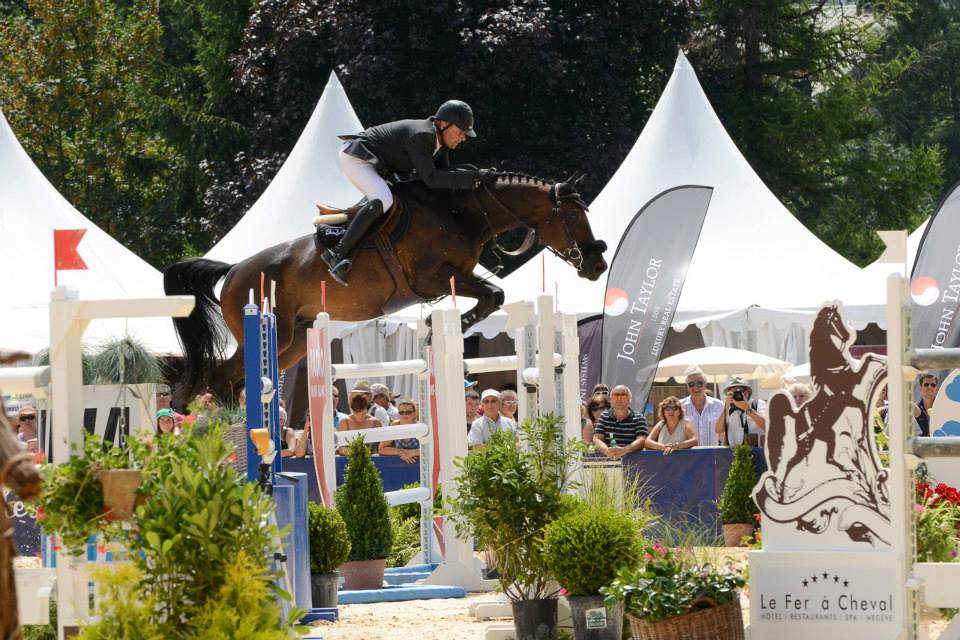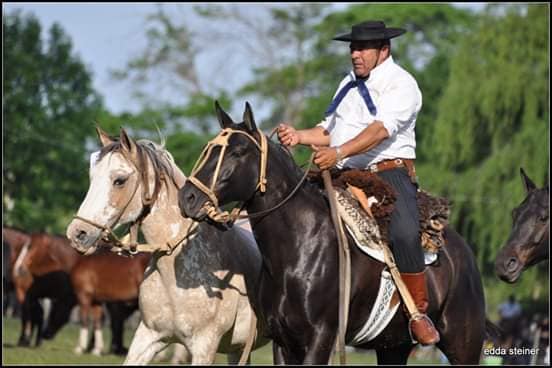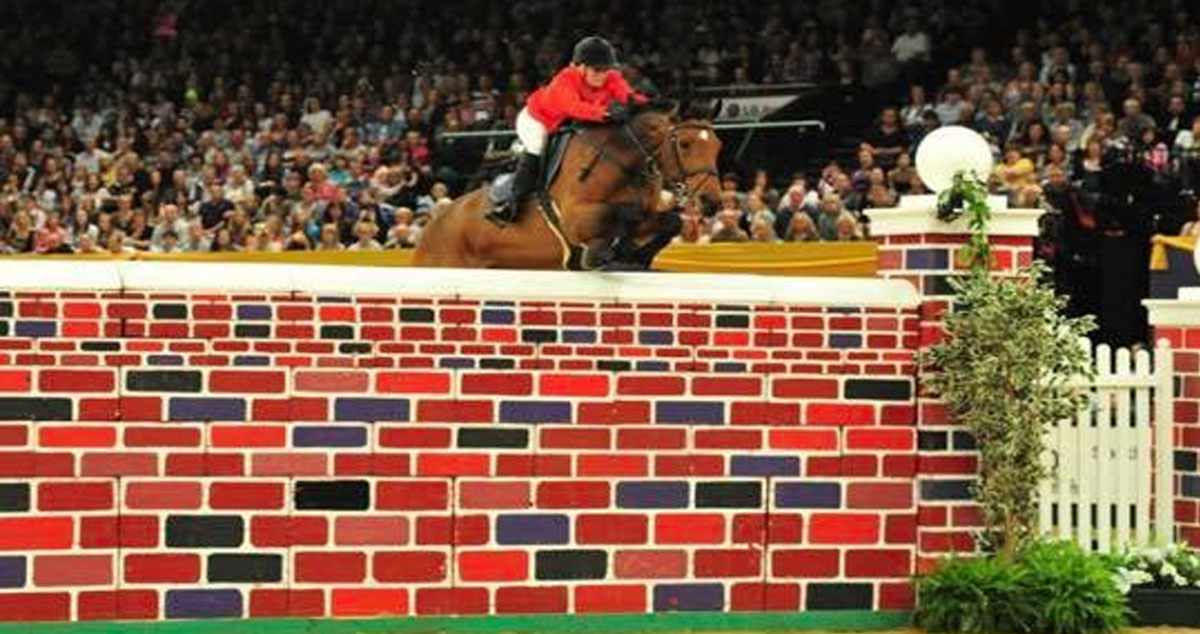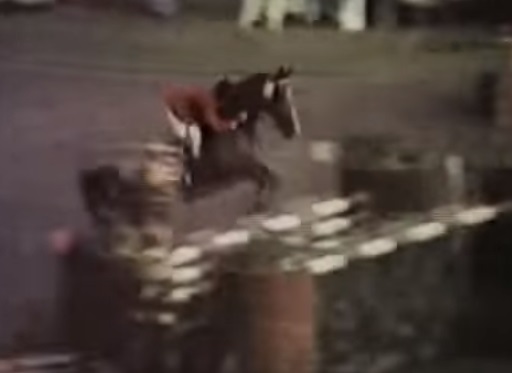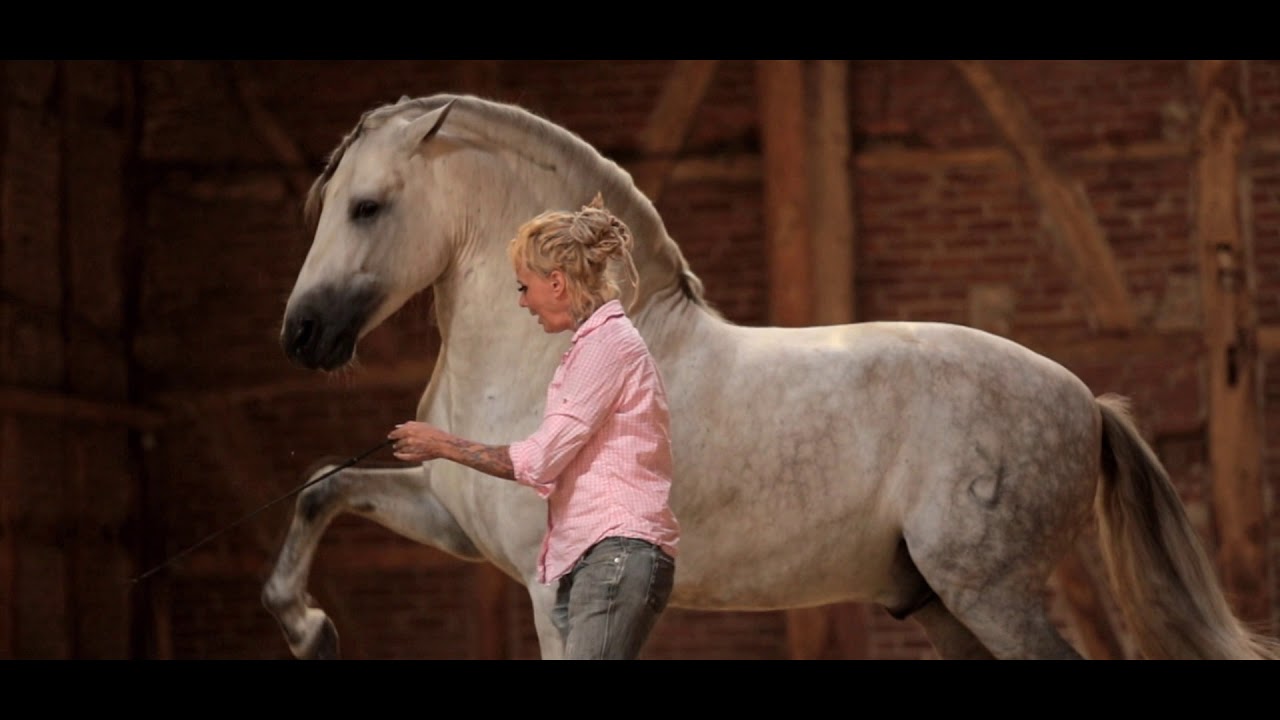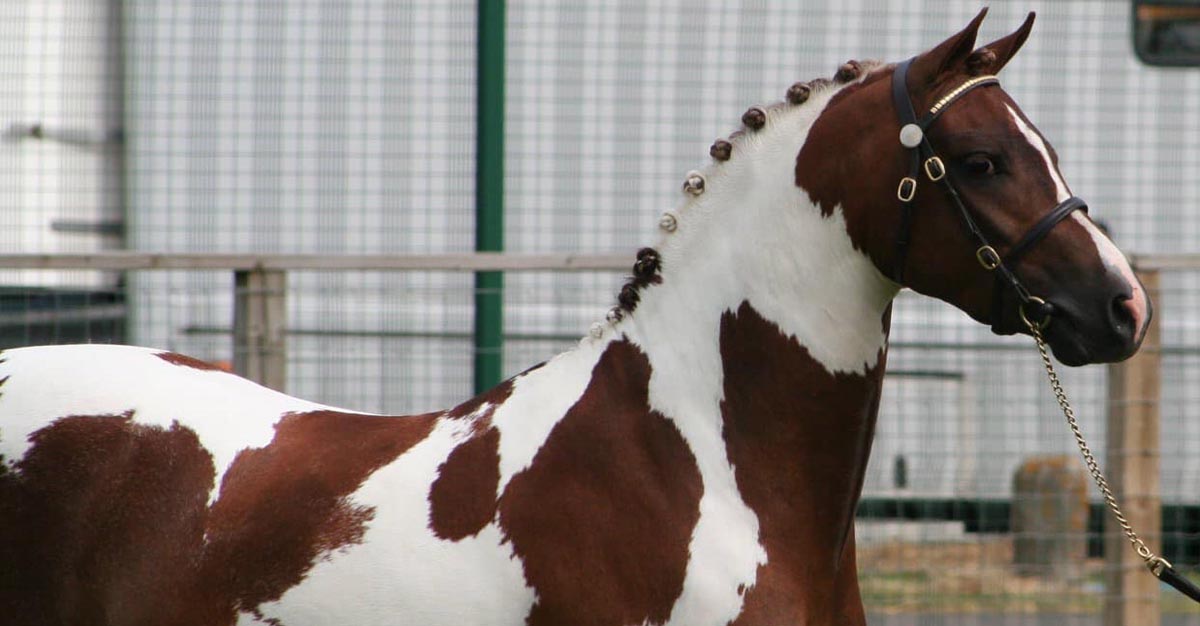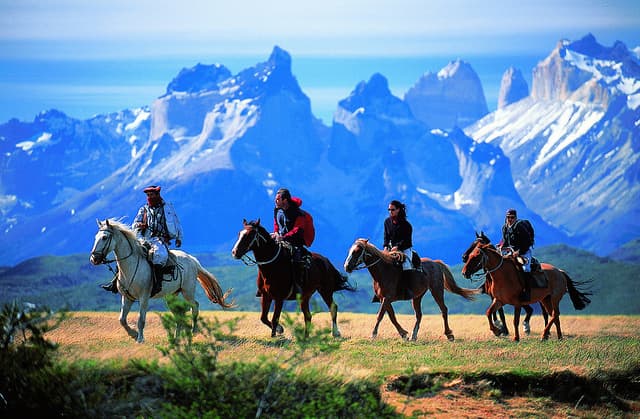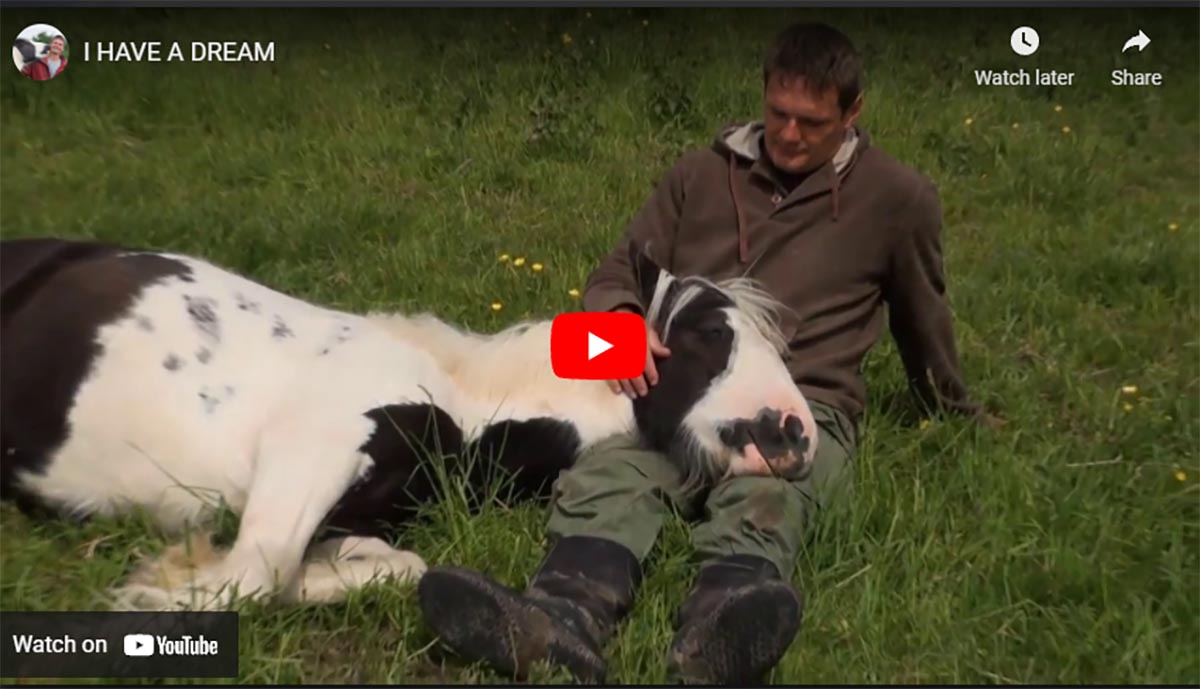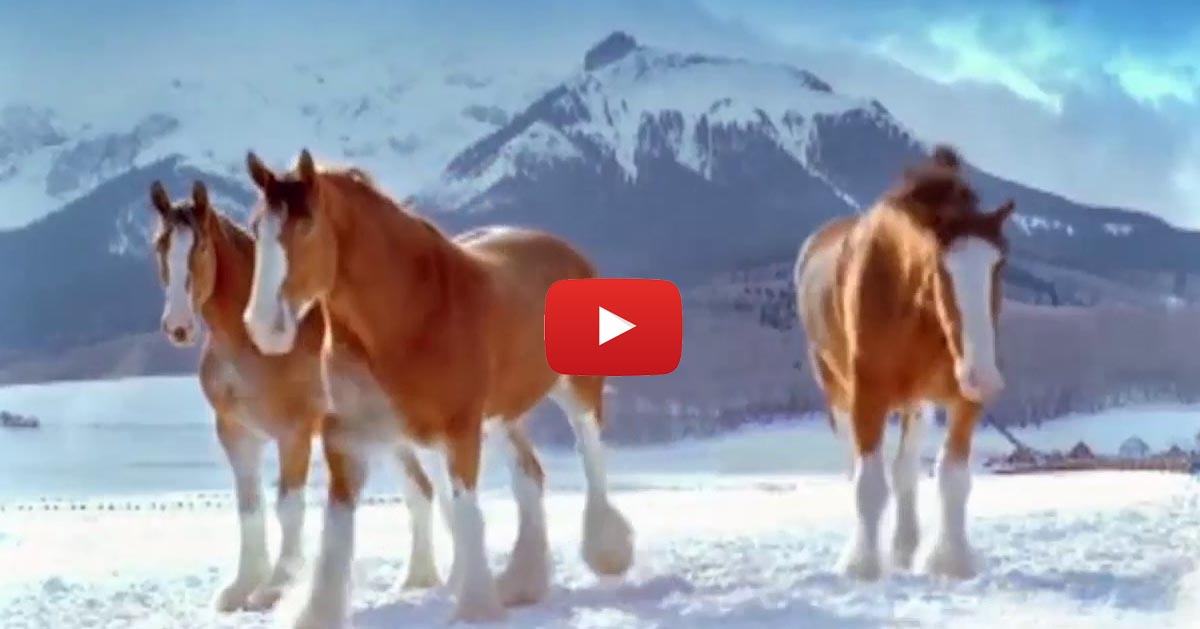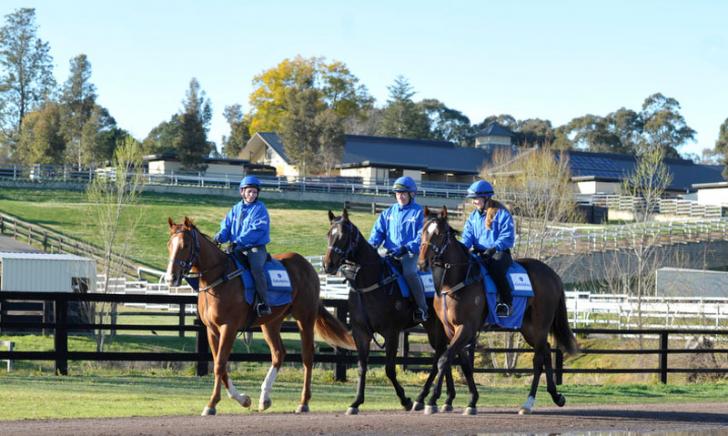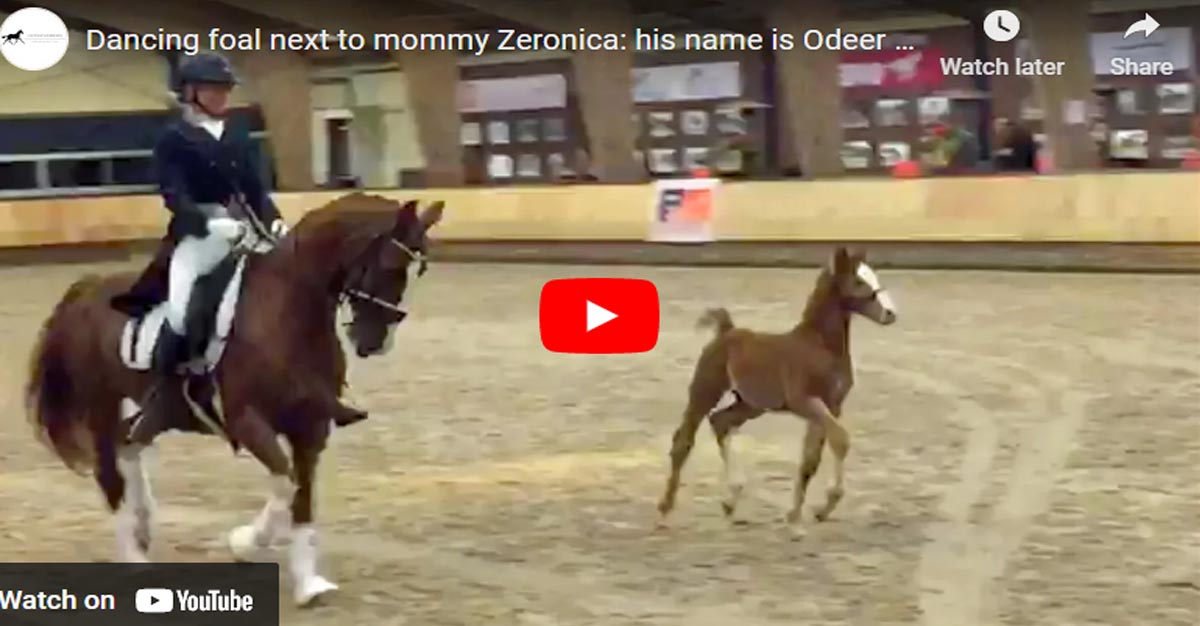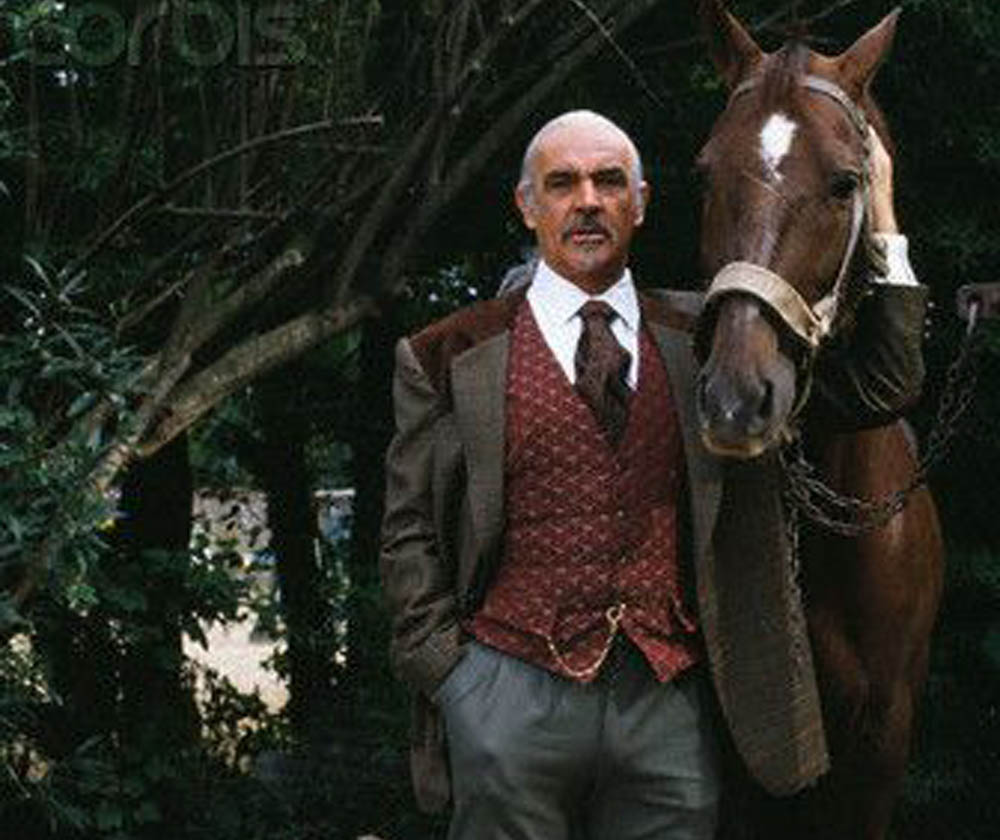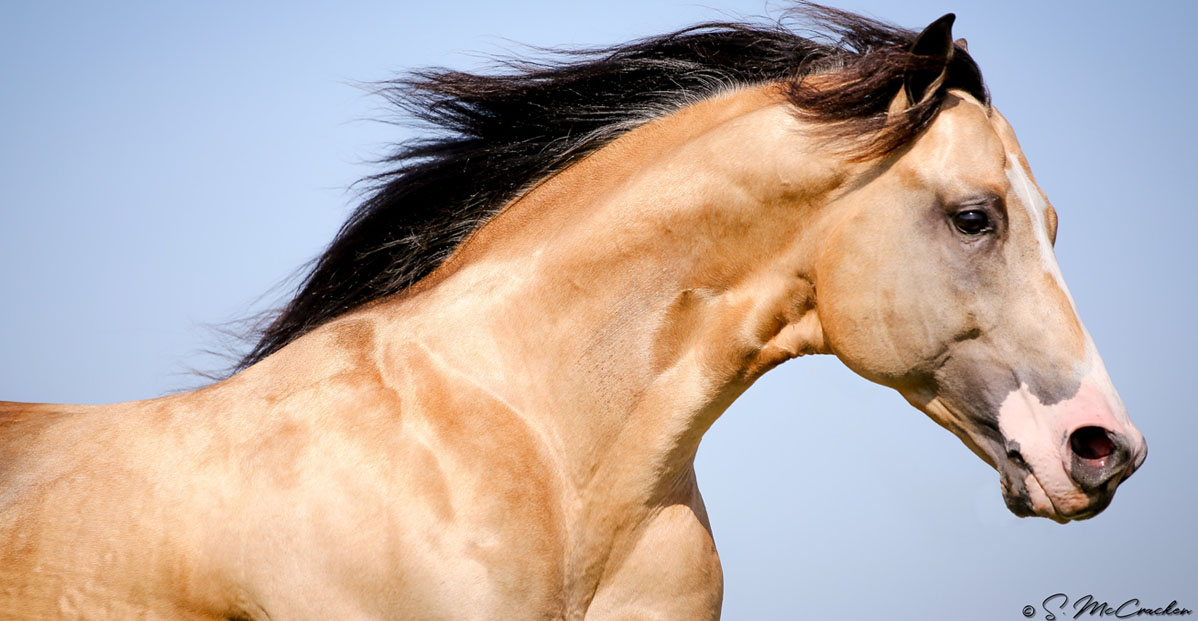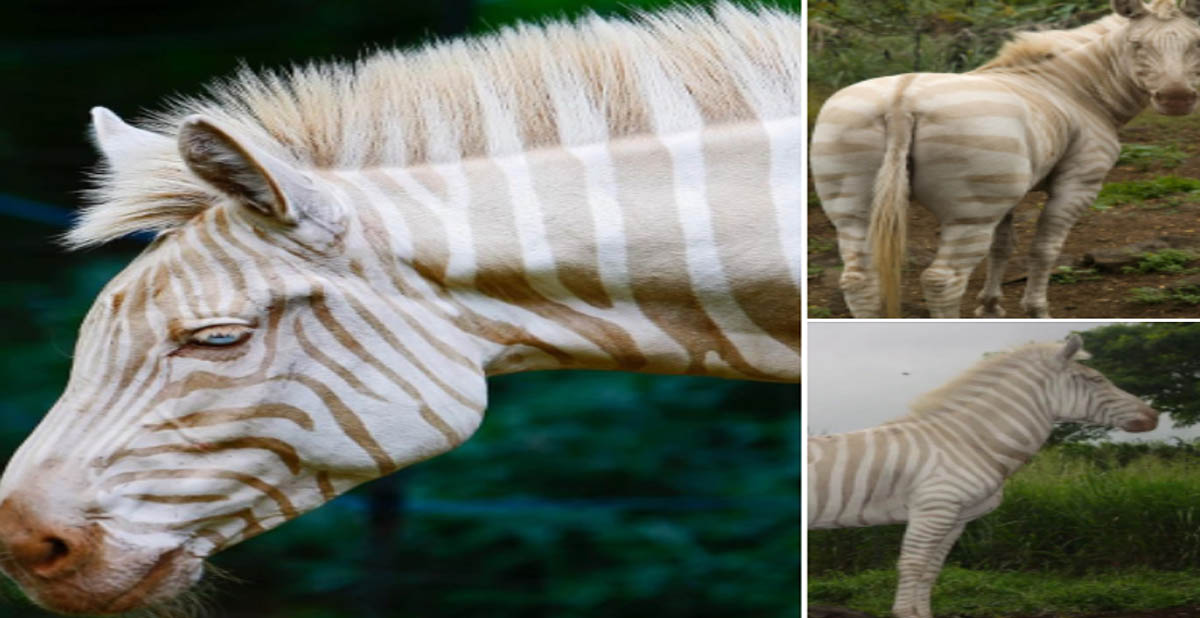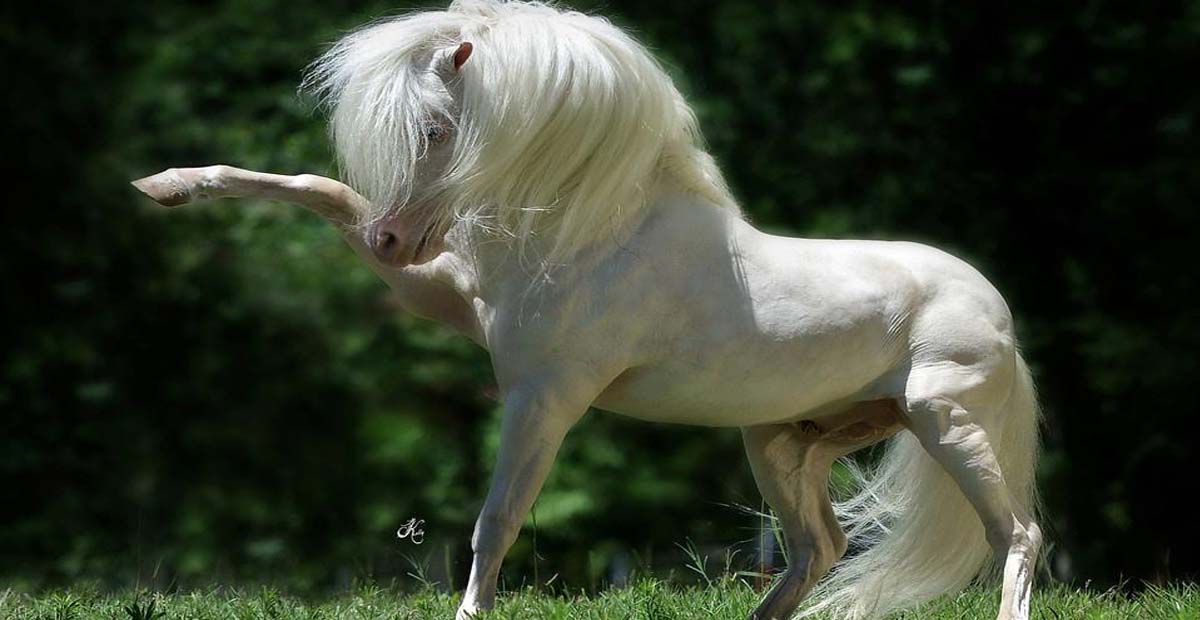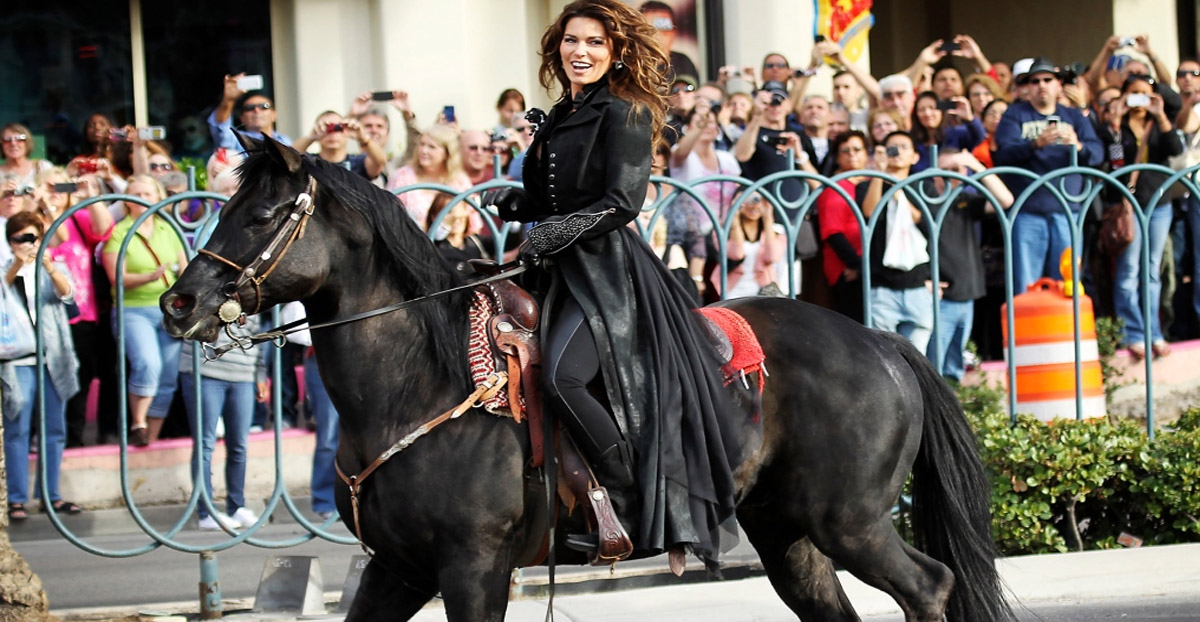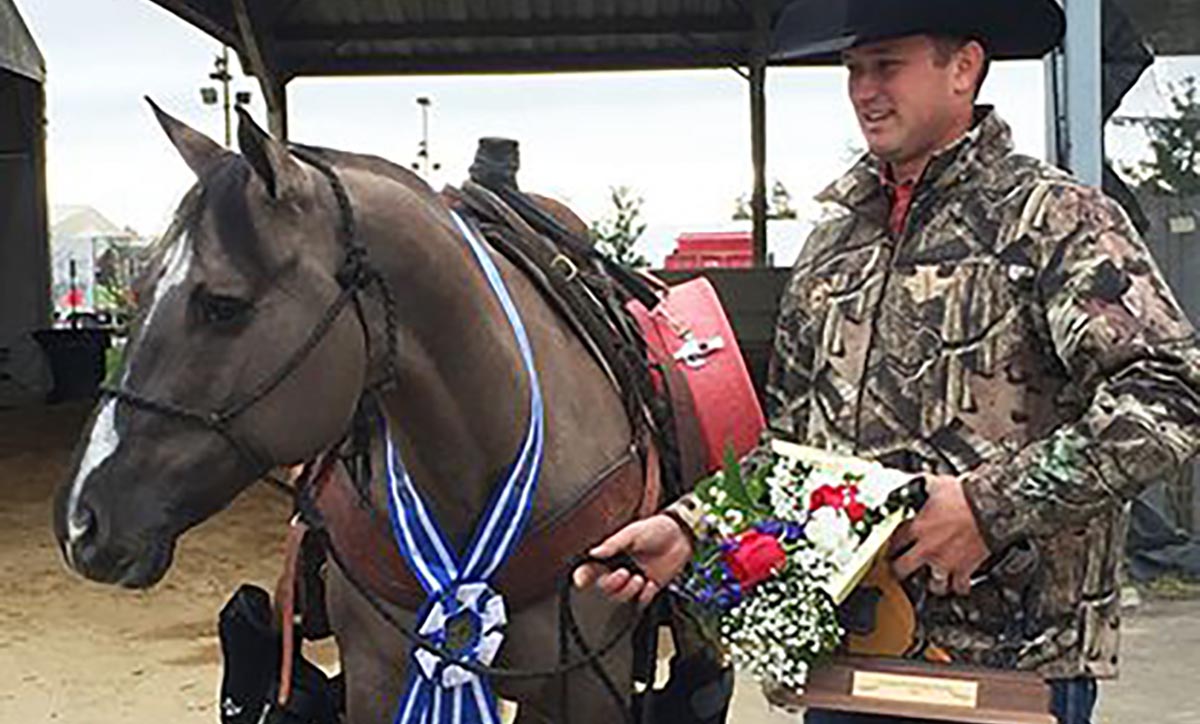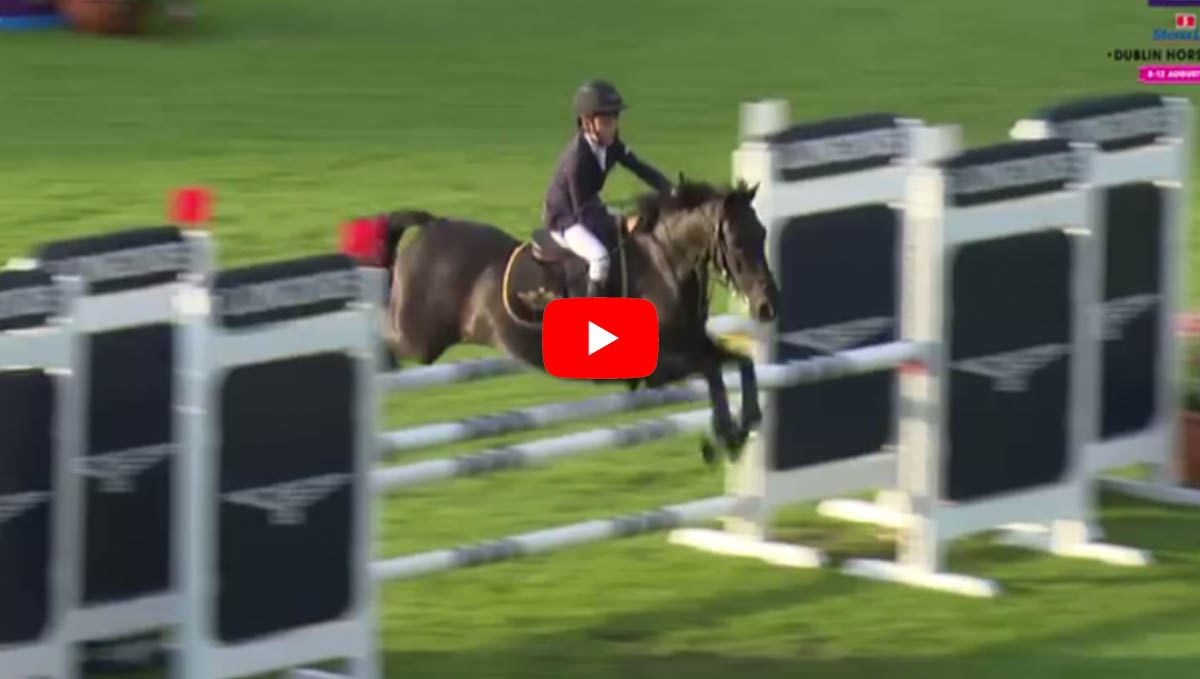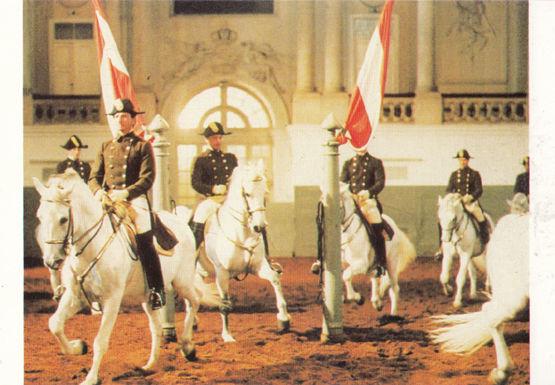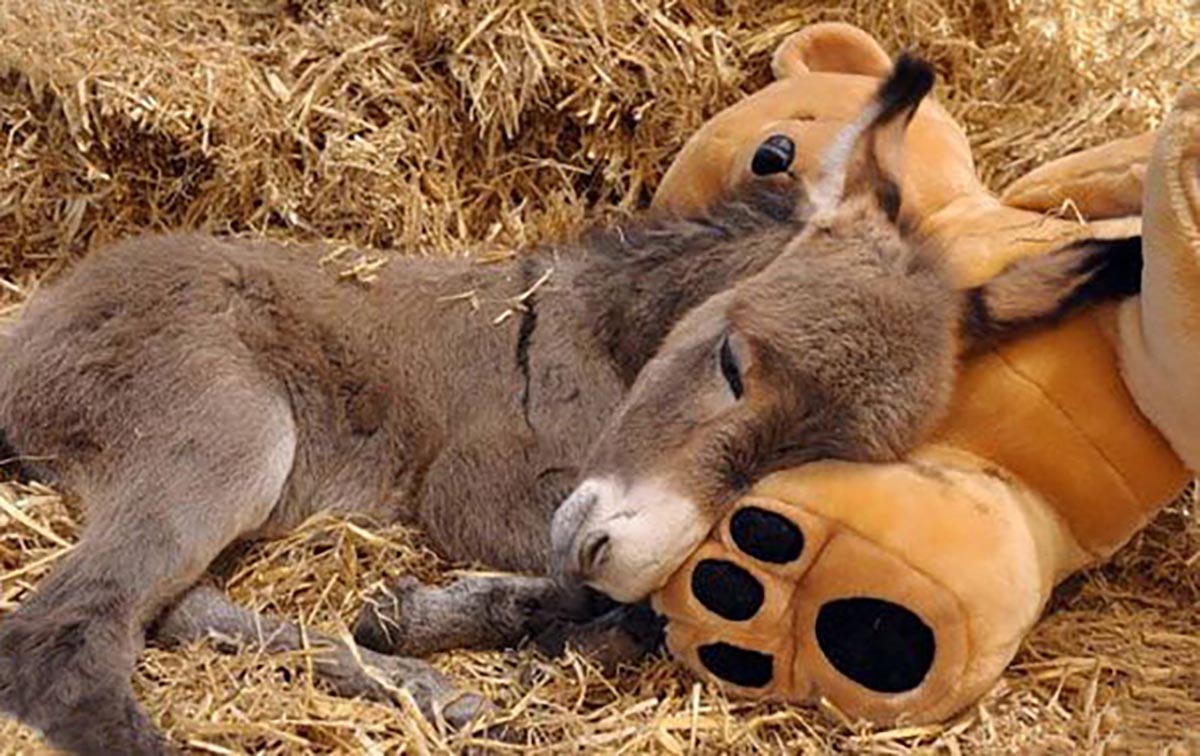Zweibrucker
The Zweibrucker (pl. Zweibrucken) is a type of German warmblood horse bred in Rhineland-Palatinate and Saarland. Traditionally, the breeding of Zweibrucken was centered on the onetime Principal Stud of Zweibrucken but since 1977 has been under the jurisdiction of the Horse Breeders` Association of Rhineland-Palatinate-Saar (PRPS). The modern Zweibrucker is an elegant, large-framed, correct sport horse with powerful, elastic gaits suitable for dressage, show jumping, eventing and combined driving.
 Leonberg (Zweibrucker) & Mikala Gunderson
Leonberg (Zweibrucker) & Mikala Gunderson
The Rhineland-Palatinate state-owned stud facilities of Zweibrucken house the smallest number of state stallions in Germany, but the region`s horse-breeding history is rich. The modern city of Zweibrucken, meaning "two bridges", was a county throughout the Middle Ages and then later on became a duchy of the Holy Roman Empire. The state stud was founded in 1755 by Duke Christian IV following a visit to England. While abroad he admired the refined, spirited English Thoroughbreds, as a breed less than 100 years old at the time. When Christian IV returned to Zweibrucken, he financed the establishment of "royal facilities" throughout the region, populating them with noble stallions and mares.
In 1801, Zweibrucken was annexed by France, and the noble horses were moved to Rosiers aux Salines.[3] However, Napoleon saw the stallion and mare herds at Zweibrucken Principal Stud re-established in 1806. The central facility and its many outposts and stallion depots were populated with more than 250 stallions and a herd of over 100 mares purchased from notable German breeding outfits, as well as fashionable Spanish horses and products of the formidable Austro-Hungarian empire. Less than a decade later, Zweibrucken was given to Maximilian I Joseph of Bavaria, and Zweibrucken was retitled in 1890 as the Principal Royal Bavarian State Stud. During this period, large numbers of Anglo-Normans - Thoroughbred-influenced agricultural horses from France - and Arabians were stationed in Zweibrucken. The first organized breeding of Anglo-Arabian horses occurred at Zweibrucken during this time period. The region became widely known for its refined cavalry horses which combined the size and speed of the Thoroughbred with the more tractable temperament of the Arabian. By 1900, the Principal Stud of Zweibrucken comprised more than 250 head of breeding stock and young horses, 74 of which were state-owned stallions.
Pinterest Zweibrucker sport horse stallion, Fandango GSF
The first half of the 20th century was marked by increasing demands for a heavier all-purpose farm horse, which were used extensively in the first World War for pulling artillery wagons. Consequently, the refined riding horses were replaced by heavy warmbloods from Oldenburg. During World War II, the entire city was evacuated and the horses brought to Bavaria. Much of the city was destroyed, and the state stud facilities came under the jurisdiction of the newly formed German federal state of Rhineland-Palatinate. Nearly a quarter of the 58 stallions standing at Zweibrucken were draft horses.
Zweibrucken lost the status of Principal Stud - which keeps a herd of mares in addition to standing stallions - in 1960. As the demand for an athletic riding horse blossomed, the draft horse stallions were replaced by Trakehners. From 1966 to 1976, Trakehner stallions comprised half the stallion roster. Unlike most of the State Studs of Germany, the period for which Zweibrucken stood heavy warmblood stallions was brief; the chief focus of this region has been steadily focused on an elegant riding horse since its construction. Gradually, sires from Hanoverian and Holsteiner bloodlines joined the noble Trakehners, accelerating the local horse-breeding efforts towards the production of a warmblood riding horse.
ContentAdvert Today many of the stallion depots and outposts lie in France, while others were purchased by separate entities. Most notable among these was the facility at Birkhausen, which was bought by the Trakehner verband and from which Abiza, dam of the Canadian-born Trakehner Abdullah, was sold. The grounds of the state stud host stallion parades and the month-long stallion performance test for the regional breeding association.
Organized breeding through much of the history of Rhineland-Palatinate and Saarland was managed by the State Stud. The Horse Breeders` Association of Rhineland-Palatinate-Saar (PRPS) was formed in 1977 and directs the breeding of almost all horse breeds within the region. The breed with the largest population within the studbooks is the German Riding or Sport Horse, called the Zweibrucker. The PRPS cooperates with similar associations in Bavaria, Bad-Wurttemberg, and Saxony-Thuringia, collectively licensing and approving breeding stock.

Like other German Warmbloods, the breeding of Zweibrucken is characterized by stringent inspection criteria. Foals do not receive their papers until they are presented at a local foal show, at which judges may exclude any foal if it is markedly off-type. Along with their papers, the foals receive a brand on the left hind leg, just behind the stifle. Foal inspections also give an early indication of the quality of the sire, as well as which mares match best with him. At the age of 3, fillies may be upgraded from the foal register to the herd book through a process called Stutbuchaufnahmen or "Marebook Recording". There are several levels of mare book based on the quality of the mare and the completeness of her pedigree, which allows mares of unorthodox breeding to eventually become part of the breeding program. To be written into the herd book and thereby have registered foals, the mare is evaluated on her conformation and gaits. Mares which fail to meet the criteria may be placed in a lower mare book, or be denied altogether. Only mares in the highest mare books can produce breeding stallion sons.
Invisible Touch, Zweibrucker, * 2001, Schecke, gelding
Rider: Saskia Bruckner
Achievements: dressage horse, up to class M **
MONTARO OHF 2009 17 hh Zweibrucker Stallion
While mares can be entered into the studbook at local shows, the process of having a young stallion approved for breeding is lengthy. Stallion candidates are often identified as foals, and at the age of 2 and a half the best colts attend the licensing in Munich, Bavaria. There they are evaluated along with stallion hopefuls - köraspirants - branded Bavarian Warmblood, Wurttemberger and Saxony-Thuringian, along with some representatives from other regions. As all of these regions have a common goal in warmblood breeding, they are judged to the same standard. They are evaluated in terms of their conformational correctness, type, gaits and ability free-jumping. The best young stallions receive a temporary license which is accepted by all of the south-German breeding associations. The stallion has a period of a few years during which he must prove himself in performance, and in this way he earns full approval. This process is common to all German Warmbloods, and is quite similar to the studbook selection process used for other Warmbloods, as well.
Sue Cooperman and her own RF Lily of the Valley, a 2013 Zweibrucker mare in her first year of showing





09 - Saint Tropez, 1.35 Against the clock - 04/06/2006 - Juliette de Mesille




 Leonberg (Zweibrucker) & Mikala Gunderson
Leonberg (Zweibrucker) & Mikala GundersonThe Rhineland-Palatinate state-owned stud facilities of Zweibrucken house the smallest number of state stallions in Germany, but the region`s horse-breeding history is rich. The modern city of Zweibrucken, meaning "two bridges", was a county throughout the Middle Ages and then later on became a duchy of the Holy Roman Empire. The state stud was founded in 1755 by Duke Christian IV following a visit to England. While abroad he admired the refined, spirited English Thoroughbreds, as a breed less than 100 years old at the time. When Christian IV returned to Zweibrucken, he financed the establishment of "royal facilities" throughout the region, populating them with noble stallions and mares.

In 1801, Zweibrucken was annexed by France, and the noble horses were moved to Rosiers aux Salines.[3] However, Napoleon saw the stallion and mare herds at Zweibrucken Principal Stud re-established in 1806. The central facility and its many outposts and stallion depots were populated with more than 250 stallions and a herd of over 100 mares purchased from notable German breeding outfits, as well as fashionable Spanish horses and products of the formidable Austro-Hungarian empire. Less than a decade later, Zweibrucken was given to Maximilian I Joseph of Bavaria, and Zweibrucken was retitled in 1890 as the Principal Royal Bavarian State Stud. During this period, large numbers of Anglo-Normans - Thoroughbred-influenced agricultural horses from France - and Arabians were stationed in Zweibrucken. The first organized breeding of Anglo-Arabian horses occurred at Zweibrucken during this time period. The region became widely known for its refined cavalry horses which combined the size and speed of the Thoroughbred with the more tractable temperament of the Arabian. By 1900, the Principal Stud of Zweibrucken comprised more than 250 head of breeding stock and young horses, 74 of which were state-owned stallions.

Pinterest Zweibrucker sport horse stallion, Fandango GSF
The first half of the 20th century was marked by increasing demands for a heavier all-purpose farm horse, which were used extensively in the first World War for pulling artillery wagons. Consequently, the refined riding horses were replaced by heavy warmbloods from Oldenburg. During World War II, the entire city was evacuated and the horses brought to Bavaria. Much of the city was destroyed, and the state stud facilities came under the jurisdiction of the newly formed German federal state of Rhineland-Palatinate. Nearly a quarter of the 58 stallions standing at Zweibrucken were draft horses.

Almati | A La Bonheur x Laisy | Zweibrucker Stallion


Zweibrucken lost the status of Principal Stud - which keeps a herd of mares in addition to standing stallions - in 1960. As the demand for an athletic riding horse blossomed, the draft horse stallions were replaced by Trakehners. From 1966 to 1976, Trakehner stallions comprised half the stallion roster. Unlike most of the State Studs of Germany, the period for which Zweibrucken stood heavy warmblood stallions was brief; the chief focus of this region has been steadily focused on an elegant riding horse since its construction. Gradually, sires from Hanoverian and Holsteiner bloodlines joined the noble Trakehners, accelerating the local horse-breeding efforts towards the production of a warmblood riding horse.

ContentAdvert Today many of the stallion depots and outposts lie in France, while others were purchased by separate entities. Most notable among these was the facility at Birkhausen, which was bought by the Trakehner verband and from which Abiza, dam of the Canadian-born Trakehner Abdullah, was sold. The grounds of the state stud host stallion parades and the month-long stallion performance test for the regional breeding association.


Like other German Warmbloods, the breeding of Zweibrucken is characterized by stringent inspection criteria. Foals do not receive their papers until they are presented at a local foal show, at which judges may exclude any foal if it is markedly off-type. Along with their papers, the foals receive a brand on the left hind leg, just behind the stifle. Foal inspections also give an early indication of the quality of the sire, as well as which mares match best with him. At the age of 3, fillies may be upgraded from the foal register to the herd book through a process called Stutbuchaufnahmen or "Marebook Recording". There are several levels of mare book based on the quality of the mare and the completeness of her pedigree, which allows mares of unorthodox breeding to eventually become part of the breeding program. To be written into the herd book and thereby have registered foals, the mare is evaluated on her conformation and gaits. Mares which fail to meet the criteria may be placed in a lower mare book, or be denied altogether. Only mares in the highest mare books can produce breeding stallion sons.

@HeidiDressage


Invisible Touch, Zweibrucker, * 2001, Schecke, gelding
Rider: Saskia Bruckner
Achievements: dressage horse, up to class M **

MONTARO OHF 2009 17 hh Zweibrucker Stallion

While mares can be entered into the studbook at local shows, the process of having a young stallion approved for breeding is lengthy. Stallion candidates are often identified as foals, and at the age of 2 and a half the best colts attend the licensing in Munich, Bavaria. There they are evaluated along with stallion hopefuls - köraspirants - branded Bavarian Warmblood, Wurttemberger and Saxony-Thuringian, along with some representatives from other regions. As all of these regions have a common goal in warmblood breeding, they are judged to the same standard. They are evaluated in terms of their conformational correctness, type, gaits and ability free-jumping. The best young stallions receive a temporary license which is accepted by all of the south-German breeding associations. The stallion has a period of a few years during which he must prove himself in performance, and in this way he earns full approval. This process is common to all German Warmbloods, and is quite similar to the studbook selection process used for other Warmbloods, as well.

Sue Cooperman and her own RF Lily of the Valley, a 2013 Zweibrucker mare in her first year of showing

Gallant Reflection HU |2009 Chestnut Zweibrucker Stallion 16.1 h.
Galant du Serein x Rohmanie – Rohdiamante |
Westfalen NA Stallion Book I



Sam Dempsey
Sam Dempsey - Ireland - Eventing
Olivier Le Morvan
Olivier Le Morvan - France - Endurance Rider
Pamela Pentz
Pamela Pentz - USA - Dressage Rider
Wilfried Pierrot
Wilfried Pierrot - France - Showjumping Rider
Wilfried Pierrot Competition Results
19 - Saint Tropez, Grand Prix - 05/06/2006 - Hasard de Carolles09 - Saint Tropez, 1.35 Against the clock - 04/06/2006 - Juliette de Mesille
Ashley Colonel
Ashley Colonel - USA - Eventing
Osman Hazinedaroglu
Osman Hazinedaroglu - Turkey - Dressage Rider
Priscille Abrantes
Priscille Abrantes - France - Showjumping
Arifka Dujardin
Arifka Dujardin - Belgium - Horse Vaulting


